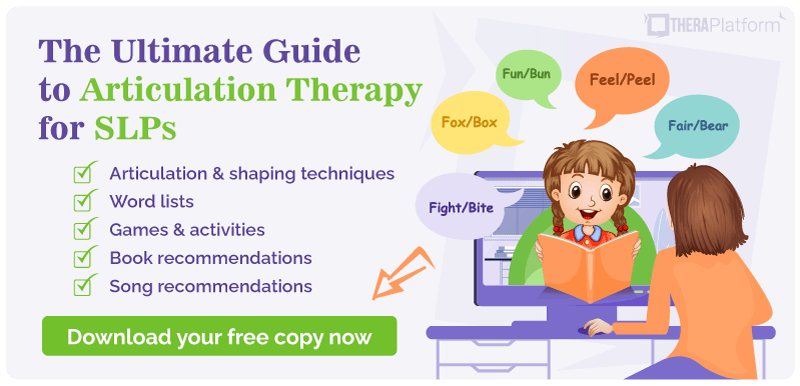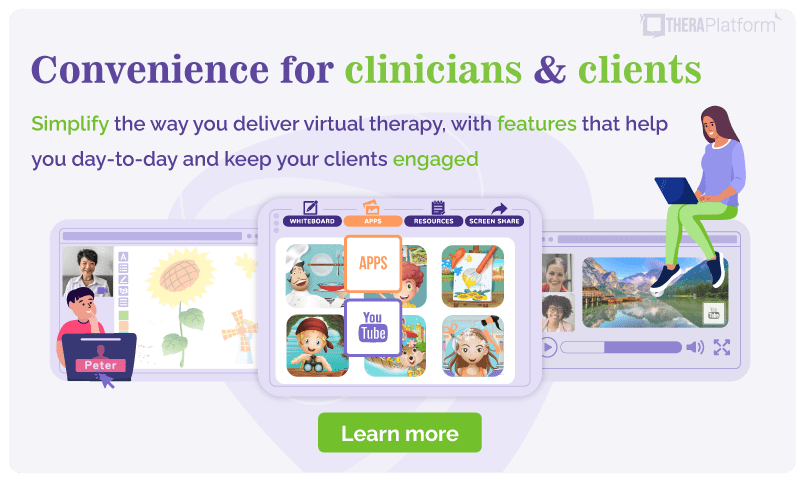Th words

“Th” words and sounds can be so tricky for children to make and /th/ sounds are actually considered the latest developing sound.
Many children have difficulty producing the /th/ sound, and speech language pathologists know that’s considered typical for children until they reach school age. Then, it’s time to directly target this sound in speech therapy to help improve your client’s intelligibility in articulating /th/ words.
There are actually two different /th/ sounds.
Voiced /th/ /ð/: as in “that”
Voiceless /th/ /θ/: as in “think”
The voiced /th/ sound is expected to develop by age 5 years 11 months. It’s made by moving the tongue so it’s placed just behind or slightly between the teeth. The vocal cords are used for this “voiced” sound. Children often replace the voiced /th/ sound for another voiced consonant, such as /d/ when pronouncing /th/ words
The voiceless /th/ sound typically develops by age 6 years 11 months, according to developmental norms. /Th/ words are also made by having the tongue placed behind/against or slightly between the teeth. This sound, however, does not require use of the vocal cords. Instead, a slight stream of air is passed through the mouth and out through the teeth.
Many speech therapists have had children on their caseload who mispronounce /th/ words like saying “baf” for bath and “dat” for that. So, where to start when it’s time to address /th/ words?
By age 6 to 7 years old, the errors that a child uses when producing the /th/ sound have likely been established by the child for several years. You may need to pull out a special bag of tricks when preparing to tackle /th/ words in therapy.
The solution? Effective and engaging activities for improving articulation of the voiced and voiceless /th/ sounds.
A /th/ word list for these sounds in order of complexity and word position will also give you a running start for working on this advanced sound. If you and your clients enjoy technology, you can also look into different apps for articulation that can be rewarding to some children.
If you provide teletherapy services, a video conferencing platform integrated into an EMR such as TheraPlatform, can help you make your online articulation therapy fun and engaging with their built-in apps and games.

Download our Ultimate Articulation Guide

Speech activities and ideas targeting th sound and words
Exercise #1: Explain “Voice On” & “Voice Off”
- When first introducing the /th/ sound, it’s important to go over the 2 types of /th/ sounds to your client.
- That way, you can then explain to the child which /th/ sound will be working on in therapy.
- Talk about the “voice on” /th/ sound. Show the client how you use your vocal cords to make that sound. Explain that if you put your hand on your throat, you can actually feel the vibrations which let you know that your voice is “on”.
- Then talk about the “voice off” /th/ sound. You can explain that your tongue is in the same position for this sound (between the teeth or behind, pushing slightly against them). Again, encourage the client to feel their neck but remind them that for this sound, they shouldn’t feel any vibrations. The voice is off.
- You can also explain that making the voiceless /th/ involves making a slight stream of air come out between your teeth. Tactile cues can be helpful for understanding this. Show your client how putting your hand slightly in front of your mouth allows you to feel that air when you make the sound.
- Another way to remember these is by calling them a “loud th” and a “quiet th” sound.
- Once you’ve gone over the two types of /th/ sounds, tell your client which one you will be working on. After your explanation, your client will already have some knowledge on the placement and manner for producing the sound and annunciating /th/ words.
Exercise #2: Shape /th/ From the /z/ sound
If you’re targeting the voiced /th/ sound in therapy, try starting with the /z/ sound.
Chances are, if your client is stimulable for producing the /z/ sound accurately, you can help him or her shape that into producing a voiced /th/ sound.
As the child says “zzzzz”, ask them to open their mouth a little wider and slide their tongue slightly forward, between their teeth.
The result should be a strong voiced /th/ sound.
Exercise #3: Watch this
Although /th/ develops at a later age than other consonants, its production can be easier to explain and demonstrate to your client.
That’s because it is so visual.
Show the client in-session or in teletherapy how you put your tongue behind the top teeth, pushing slightly against them. Or, put your tongue tip between your upper and lower teeth.
You can also use a mirror to provide your client with some visual feedback on how they’re doing with their own tongue placement for the /th/ sound.
A mouth puppet can also do the trick here, providing your client with even more clear visual cues for the placement of the voiced or voiceless /th/ sounds.
Start 30-day Free Trial and explore TheraPlatform. HIPAA Compliant Video and Practice Management Software for Therapists.
Exercise #4: Start where your client has success
Once your client has mastered the voiced or voiceless /th/ sound in isolation, it’s time to move on to eliciting the sound in syllables in /th/ words.
- Try making a picture of a web. You’ll draw a small circle in the middle with /th/ in it. Then draw lines coming out from it, which each have a vowel sound on them; /a/, /e/, /i/, /o/, /u/.
- Ask your client to first try producing the /th/ sound, and then a vowel. For example, “the” or “tho”.
- Next, ask your client to go the other way and produce the /th/ sound at the end of syllables.
- They’ll start with a vowel and with the /th/ sound. For example, “oth” or “eth”.
- During which exercise did your client have more success in producing the /th/ sound?
Probing the different syllable positions of /th/ words can help you determine which one the child is most stimulable for. Some children may be more easily able to produce /th/ in the final position of syllables than the initial position, or vice versa.
Visual and verbal cues are key when working on the /th/ sound, as it can help children correct an established motor pattern of an error. If the client puts their top teeth on their bottom lip (substituting the /th/ with a /v/ sound), remind the child to put their tongue between their teeth instead.
Word lists for /th/
Initial Position
1-Syllable
The | They | Than | This | There |
Though | Them | Those | That | Thou |
Multisyllabic
Themselves | Therefore | Thereby | Therein | Thereabout |
Medial Position
Brother | Mother | Father | Feather | Other | Weather | Together | Clothing | Breathing | Bathing |
Gather | Another | Otherwise | Either |
Final Position
1-Syllable
Clothe | Breathe | Bathe | Loath | Teethe |
Multisyllabic
Sunbathe |
Voiced /th/ /ð/ word lists
Initial Position
1-Syllable
Think | Think | Thick | Thief | Thaw |
Thing | Thread | Thorn | Thought | Third |
Thigh | Thumb | Throat | Three |
Multisyllabic
Thermos | Thirteen | Thinking | Thirty | Thousand |
Theater | Thursday | Thanksgiving |
Medial Position
Birthday | Bathroom | Toothbrush | Healthy | Athlete |
Marathon | Toothpick | Anything | Method | Authentic |
Everything | Stethoscope |
Final Position
1-Syllable
With | Bath | Tooth | Cloth | Booth |
Fifth | Forth | Sixth | Breath | Broth |
Truth |
Multisyllabic
Mammoth | Goldsmith | Underneath | Fifteenth | Beneath |
Dishcloth |
Resources
SLPs working with individuals who have an articulation disorder or phonological disorder for /th/ words can utilize TheraPlatform for helpful resources. They offer games and apps for engaging sessions as part of their Pro Plus plan. TheraPlatform, an all-in-one EHR, practice management and teletherapy tool was built for therapists to help them save time on admin tasks. Consider starting with a free trial of TheraPlatform today. No credit card required and cancel anytime.
More resources
- S words
- P words
- Online speech therapy games
- Therapy resources and worksheets
- Therapy private practice courses
- Ultimate teletherapy ebook
- The Ultimate Insurance Billing Guide for Therapists
- The Ultimate Guide to Starting a Private Therapy Practice




